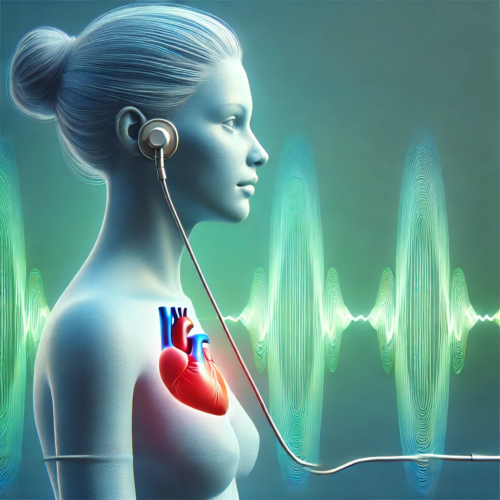Getting the Heart of HeartMath
HeartMath products, tools and techniques are based on over 30 years of scientific research conducted at the HeartMath Institute on the psychophysiology of stress, emotions and the interactions between the heart and brain.
Their research has shown that generating sustained positive emotions facilitates a body-wide shift to a specific, scientifically measurable state. This state is termed psychophysiological coherence because it is characterised by increased order and harmony in both our psychological (mental and emotional) and physiological (bodily) processes.
Several important physiological changes occur during coherence. The two branches of the autonomic nervous system (ANS) synchronise with one another, and there is an overall shift in autonomic balance towards increased parasympathetic activity. There is also increased physiological entrainment – several different bodily systems synchronise to the rhythm generated by the heart. Finally, there is increased synchronisation between the heart and brain activity.
Therefore, HeartMath coherence is a state of optimal function in which our physiological systems operate more efficiently. We experience greater emotional stability, increased mental clarity, and improved cognitive function. In other words, our body and brain work better, we feel better, and we perform better.
HeartMath Coherence Is Neither Relaxation Nor Breathing Techniques
HeartMath coherence is distinct from most relaxation techniques. At the physiological level, relaxation is characterised by an overall reduction in autonomic outflow, resulting in lower heart rate variability (HRV) and shifting ANS balance towards increased parasympathetic activity.
In addition, HeartMath coherence allows the system to oscillate at its natural resonant frequency, resulting in increased harmony and synchronisation in the nervous system and heart-brain dynamics. This is primarily marked by a change in the heart rhythm pattern.
The psychological characteristics of these states are also quite different. Relaxation is a low-energy state in which the individual rests both body and mind, typically disengaging from cognitive and emotional processes. In contrast, HeartMath coherence generally involves the active engagement of positive emotions. It is experienced as a calm, balanced, yet energised and responsive state that is conducive to everyday functioning and interaction, including tasks requiring mental acuity, focus, problem-solving, decision-making, physical activity and coordination.
HeartMath coherence also differs from breathing techniques. HeartMath tools focus on intentionally generating a heartfelt, positive emotional state. Positive emotions appear to excite the system at its natural resonant frequency, enabling coherence to emerge and be maintained naturally without conscious mental focus on one’s breathing rhythm. When the heart’s rhythm shifts into coherence due to a positive emotional shift, our breathing rhythm synchronises with the heart, reinforcing and stabilising the shift to system-wide coherence.
Thus, HeartMath technology is an innovative approach to improving emotional well-being. Changing your heart rhythm pattern creates physiological coherence – a scientifically measurable state characterised by increased order and harmony in your mind, emotions and body.
Contrary to popular belief, the heart sends more signals to the brain than the brain sends to the heart. Therefore, the heart significantly affects brain function, influencing emotional processing and higher cognitive faculties such as attention, perception, memory, and problem-solving. In other words, not only does the heart respond to the brain, but the brain continuously responds to the heart.
HeartMath Institute research has demonstrated that different patterns of heart activity—which accompany different emotional states – have distinct effects on cognitive and emotional function. During stress and negative emotions, when the heart rhythm pattern is erratic and disordered, the corresponding pattern of neural signals travelling from the heart to the brain inhibits higher cognitive functions. This limits our ability to think clearly, remember, learn, reason and make effective decisions. The heart’s input to the brain during stressful or negative emotions also profoundly affects the brain’s emotional processes, actually reinforcing the emotional experience of stress.
In contrast, the more ordered and stable pattern of the heart’s input to the brain during positive emotional states has the opposite effect – it facilitates cognitive function and reinforces positive feelings and emotional stability. This means that learning to generate increased heart rhythm coherence by sustaining positive emotions benefits the entire body and profoundly affects how we perceive, think, feel and perform.
Stephen Porges’s Polyvagal Theory also underscores HeartMath’s research through the importance of the bidirectional communication of the vagus nerve, which is 80% afferent (sensory) from the body to the brain and only 20% efferent from the brain to the body. It confirms the importance of communication between our heart, gut, and other visceral organs, influencing neuroception. Neuroception is our subconscious evaluation of safety, which influences our autonomic nervous system (ANS) regulation and thus our physiology, psychology, behaviour, cognitive ability, and ability to learn self-regulation through co-regulation.
Take the Next Step Towards Emotional Well-being
Experience the transformative power of HeartMath coherence for yourself. As a certified HeartMath Health Provider, Neuroceptive Learning is committed to helping you achieve a more regulated nervous system and enhanced emotional well-being.
Contact us today to begin your journey towards greater resilience, improved performance, and a harmonious mind-body connection.

